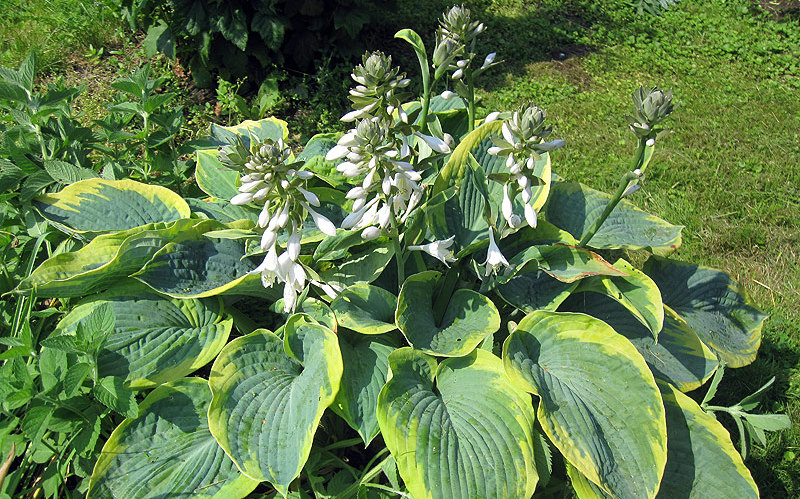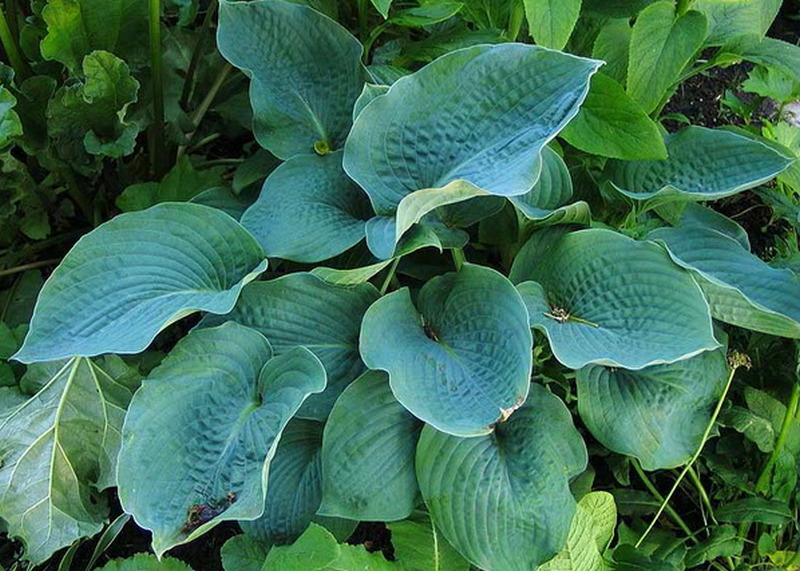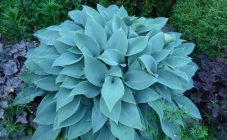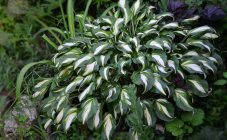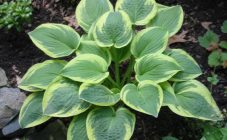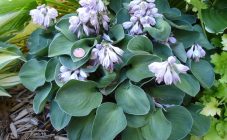Content:
Hosta belongs to the perennial plants of the Asparagus family. It is found naturally in Japan, the Far East, and East Asia. It got its name in honor of the doctor and botanist of the Austrian Nikolaus Host. Previously, the plant was known under the name funkii, which it received from the discoverer of German-born botanist Heinrich Funk. The plant got to Europe in the 18-19 centuries. Hosts are widely used to decorate flower beds, rabatok, they are planted around ponds, near trees, at the base of alpine hills, in shady areas where other flowers feel uncomfortable.
Flowering plants tend to fade quickly and take on an ugly appearance, therefore, in order for the flowerbed to have decorative effect throughout the summer season, plants such as hosta with its lush foliage should be grown.
general information
Khosta Siebold is named after the botanist and explorer Philip Siebold, who lived in the late 18th and mid-19th centuries. The Japanese skeleton of Honshu is considered its homeland. Outwardly, it is a large shrub with wide and dense leaves, with a bluish bloom, shaped like a heart and ribbed to the touch, attached to a plate about 30 cm long and up to 25 cm wide.
Varieties
In nature, there are more than 600 host varieties. In their description it is indicated that one of the most beautiful representatives of this family is considered the host Elegance (Eleganse). The plant reaches a height of 65-70 cm, and is up to 90 cm wide in an adult state. The color of the leaves is gray-blue, especially in the shade. The leaves are large, bubbly, cordate with a pointed end. The flowers are pale purple. Hosta Elegans is perfect for both group plantings in flower beds and for singles.
Hosta Frances Williams (Francis Williams) is characterized by large size and uneven color of the leaf, which has a yellowish cream border at the edges. The leaves are bluish-blue, compressed with a sharp edge.
Planting and caring for the plant
For better growth, hosta Siebold choose a semi-shady place that is protected from open winds. The plant loves fertile, light, permeable soil. Seedlings are planted in spring or early fall. For this you need:
- Dig up the allotted area;
- Dig holes, the distance between which is made, taking into account the size of the plant in the future (usually from 30 to 80 cm);
- Fill a drainage layer on the bottom;
- Pour compost, humus or peat 2/3 of the height, forming a mound;
- Add fertilizer;
- Plant seedlings, gently spreading the roots;
- Water well and cover with earth;
- Top with sawdust, tree bark or peat.
If the planting was carried out in the fall, and the winters in the region are cold and frosty, you can cover for the winter with agrofibre. Although the plants are considered frost-resistant, the shelter will help young seedlings survive the first cold weather. Plant care consists of frequent watering, preferably in the morning. Hosta Siebold Elegance is fed 3 times a season:
- In the spring, during the growth period, at this moment, a complete mineral fertilizer with trace elements is given.
- During the flowering period, give the plant phosphorus and potassium (potassium monophosphate or superphosphate with potassium sulfate)
- Closer to autumn, also feed with potassium sulfate.
You can pour rotted organic matter under the bushes throughout the season. Also, in the summer, weeds are removed, the soil under the hosts is loosened, the peduncles are cut off after flowering.
Breeding hosts Siebold
Hosts are propagated in three ways:
- dividing the bush;
- cuttings;
- seeds.
Before dividing the bush, the plant is watered abundantly, dug out, cut with a sharp knife, and if the plant is old, then with a shovel. The second method involves separating the sprout with the rhizome from the bush without digging out the entire plant. The third method - seed reproduction is considered the most laborious. Seed germination is about 80%, and summer residents prefer to buy ready-made cuttings.
Diseases and pests hosts
Among the host, the HVX virus is common, which infects only these plants. Therefore, when buying seedlings on the market, it is worth taking a closer look at the material being sold. Shading, stripes, rings, specks appear on the leaves, which sellers can pass off as features of the variety. If you look through the leaf at the sun, it shines through in these places. The virus is transmitted through the sap of the plant, so when pruning the host in the garden, it is worth disinfecting the garden tools. This virus cannot be cured; diseased plants will have to be burned.
Root collar rot is found in plants:
- planted on clay soils;
- with excessive fertilizing;
- when landing deep.
Expressed in yellowing and death of leaves, they become sticky and soft to the touch. A diseased plant is dug up, the diseased part of the root is cut off to healthy tissue, and treated with a solution of strong potassium permanganate or fungicide. They are planted in another place, adding sand or peat to the clay soil during planting, putting 2 tablets of glyoxidin on the bottom of the planting pit.
Hosts are very fond of slugs and snails. With their invasion, the leaves of young plants do not even have time to turn around; thin-leaved hosts are especially affected.
So that other members of the family do not suffer from gluttonous slugs, they are mulched with pine needles, sprinkled with crushed eggshells, plants are sprinkled with tabazol, tobacco dust, ash. If folk remedies do not help, then they use chemicals such as a slug eater and a thunderstorm.
Hosta Siebold with minimal maintenance will delight the entire summer period with large bluish foliage and decorate flower beds.
